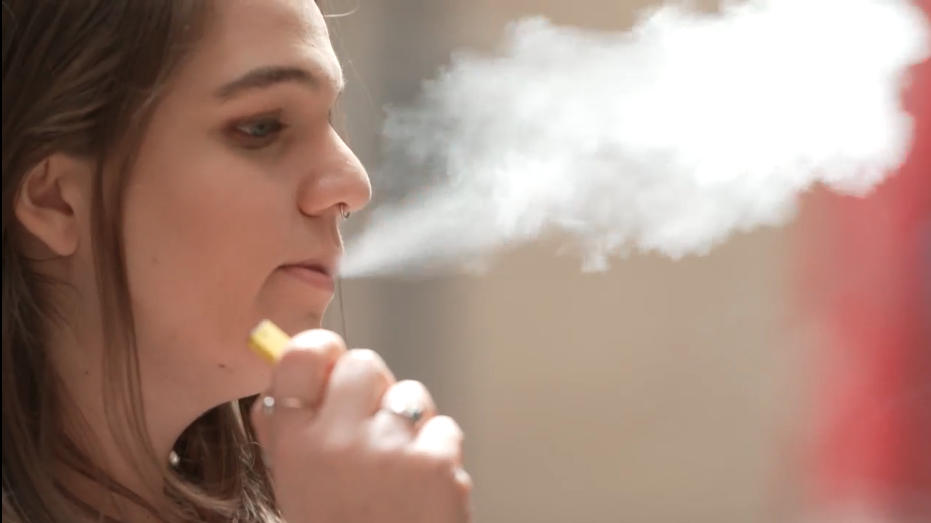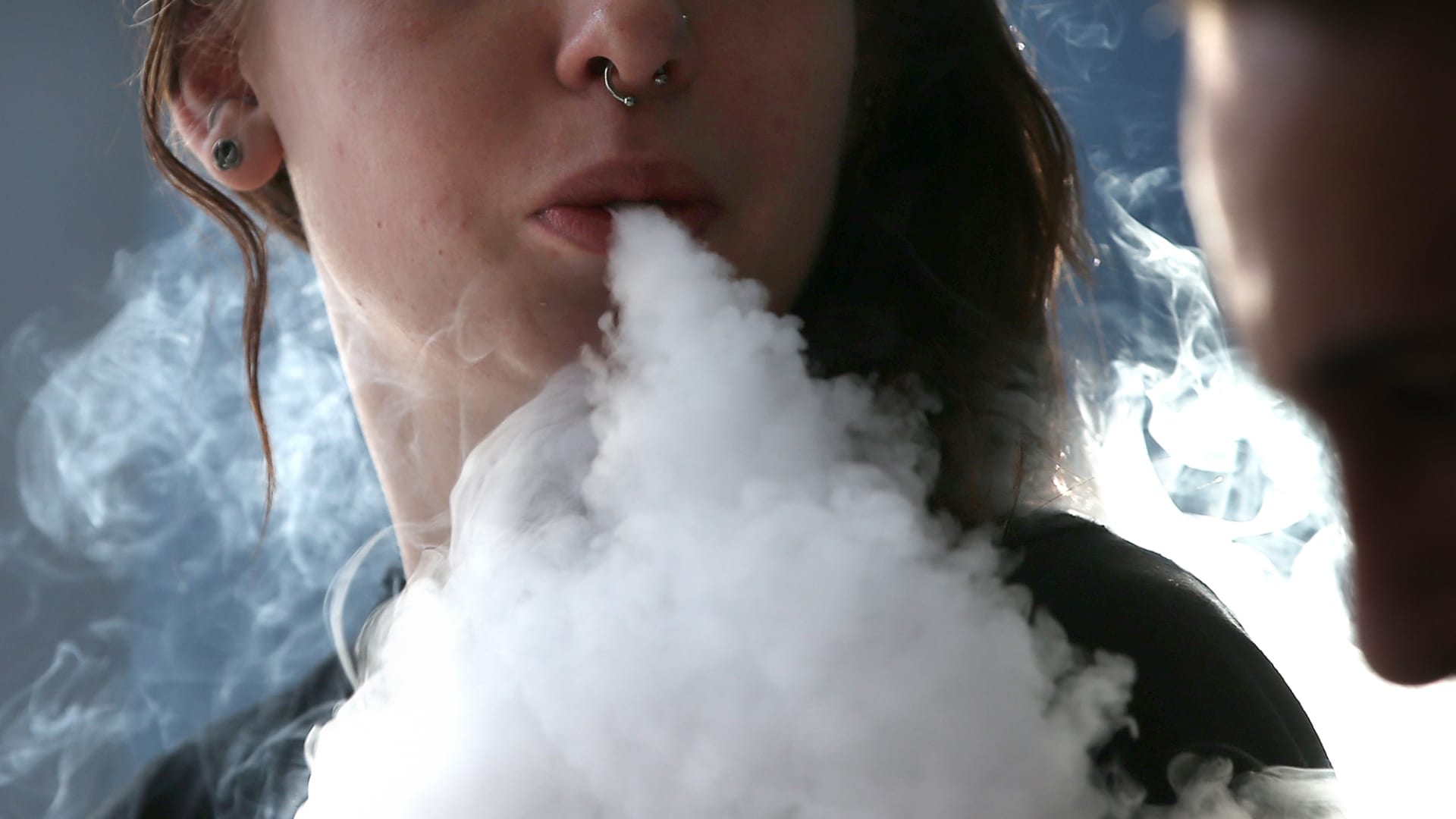WARNING: This product contains nicotine. Nicotine is an addictive chemical.
Picture this: a group of teens, huddled together, each with a sleek device that emits a cloud of vapor, looking like a scene out of a sci-fi movie. That’s right, we’re talking about vaping. But why do teens vape? It seems that these nifty gadgets have become the latest must-have accessory among the youth. In this article, we will delve into the various reasons behind this phenomenon, breaking it down into bite-sized, easy-to-digest sections. So, sit back, grab a snack, and let’s embark on this vaporous journey!
When you’re a teenager, being cool isn’t just an aspiration; it’s a full-time job. Vaping, with its slick, techy appearance, has quickly become a badge of honor in the quest for teenage coolness. Think about it: why carry around a pack of smelly cigarettes when you can have a futuristic device that looks like it belongs in a James Bond movie?
Teens are the trendsetters of society. From fashion to music, they know what’s hot before the rest of us catch on. Vaping has hit the scene as the latest trend, and no self-respecting teenager wants to be left behind. The peer pressure to fit in and be part of the in-crowd is immense, and vaping offers an easy ticket to social acceptance. Plus, with flavors like bubblegum and cotton candy, it’s almost like having a dessert in your pocket.
Let’s not forget the power of celebrity culture. When popular influencers and celebrities post pictures of themselves vaping, it’s only natural that their teen followers want to emulate them. After all, if vaping is good enough for their idols, it must be the ultimate symbol of coolness. Teens are highly impressionable, and seeing their favorite stars indulge in vaping can be a strong motivator to give it a try.

Imagine walking into an ice cream parlor where the flavors range from traditional vanilla to exotic dragon fruit. Now, replace the ice cream with vape juice, and you’ve got a glimpse into the tantalizing world of vaping flavors. It’s no wonder teens are drawn to these tasty temptations.
One of the biggest selling points of vaping is the endless variety of flavors. Whether it’s sweet, fruity, or even savory, there’s a flavor for every palate. For teens, this variety is irresistible. It turns vaping into a fun, flavorful experience rather than just a habit. With new flavors constantly hitting the market, there’s always something new to try, keeping the excitement alive.
The marketing of vape products is a science unto itself. Bright colors, catchy names, and appealing packaging are all designed to attract younger audiences. Teens are especially susceptible to these marketing tactics. When a vape juice bottle looks more like a candy wrapper than a tobacco product, it’s easy to see why teens might be tempted to give it a go. It’s like marketing 101: make it look appealing, and they’ll come running.
In the grand hierarchy of risky behaviors, vaping is often perceived as the lesser evil compared to smoking. This perception plays a significant role in why teens might choose to vape instead of lighting up a cigarette.
Many teens believe that vaping is a safer alternative to smoking. The absence of tar and the lower levels of harmful chemicals in e-cigarettes contribute to this belief. They see vaping as a healthier choice, unaware of the potential long-term effects. The notion that vaping is harmless can be quite persuasive, especially for health-conscious teens who still want to fit in with their peers.
Despite widespread information, there is still a surprising lack of awareness about the potential dangers of vaping. Teens may not fully understand the risks involved, from nicotine addiction to respiratory issues. The sleek design and enticing marketing can overshadow the warnings, leading many teens to underestimate the consequences. Education about the risks of vaping is crucial, but until then, many teens will continue to see it as a safe pastime.

Vaping isn’t just about inhaling flavored vapor; it’s also about the social experience. The act of vaping can bring teens together, creating a sense of community and shared experience.
Much like sharing a meal or a favorite TV show, vaping can be a bonding activity. Teens often vape in groups, turning it into a social ritual. This shared activity can strengthen friendships and create a sense of belonging. For teens who might feel isolated or out of place, vaping offers a way to connect with others and be part of a group.
Finally, let’s not ignore the age-old teenage desire to rebel. Vaping can be seen as a form of mild rebellion, a way to assert independence and push against the boundaries set by adults. It’s a way for teens to feel grown-up and make their own choices, even if those choices are influenced by external factors. The act of vaping, while seemingly innocent, can be a declaration of independence in the tumultuous world of adolescence.
So, why do teens vape? It’s a cocktail of coolness, enticing flavors, perceived safety, and social dynamics. Understanding these motivations can help parents, educators, and policymakers address the issue more effectively. As we navigate this vapor-filled landscape, let’s remember to keep the conversation open, the education ongoing, and the humor intact. After all, tackling serious issues with a dose of humor might just be the breath of fresh air we all need.
1. What are the main reasons teens start vaping?
Teens often start vaping due to a combination of curiosity, peer pressure, and the appeal of flavored e-liquids. Many see it as a trendy, socially acceptable activity that’s perceived to be less harmful than smoking traditional cigarettes. Additionally, the influence of celebrities and social media can play a significant role in encouraging teens to try vaping.
2. Is vaping really less harmful than smoking cigarettes?
While vaping is often marketed as a safer alternative to smoking, it’s not without risks. E-cigarettes still contain nicotine, which is highly addictive, and other chemicals that can be harmful to the lungs and overall health. The long-term effects of vaping are still not fully understood, but current research suggests it can lead to respiratory issues and other health problems.
3. What flavors of vape juice are most popular among teens?
Teens are particularly drawn to sweet and fruity flavors like mango, mint, bubblegum, and cotton candy. The wide variety of appealing flavors is one of the main attractions of vaping for young people. These flavors make the vaping experience more enjoyable and mask the harsh taste of nicotine, making it easier for teens to start and continue vaping.
4. How can parents talk to their teens about the dangers of vaping?
Parents should approach the topic of vaping with open, non-judgmental communication. It’s important to educate teens about the risks associated with vaping, including addiction, respiratory issues, and potential long-term health effects. Encouraging open dialogue and listening to their concerns can help teens feel supported and more willing to share their experiences.
5. What measures can schools take to prevent teen vaping?
Schools can implement educational programs that inform students about the dangers of vaping, similar to traditional anti-smoking campaigns. Creating a supportive environment where students feel comfortable discussing peer pressure and substance use is crucial. Additionally, schools can enforce strict policies against vaping on school grounds and provide resources for students who need help quitting.
If you want to know more, please refer to this article:
